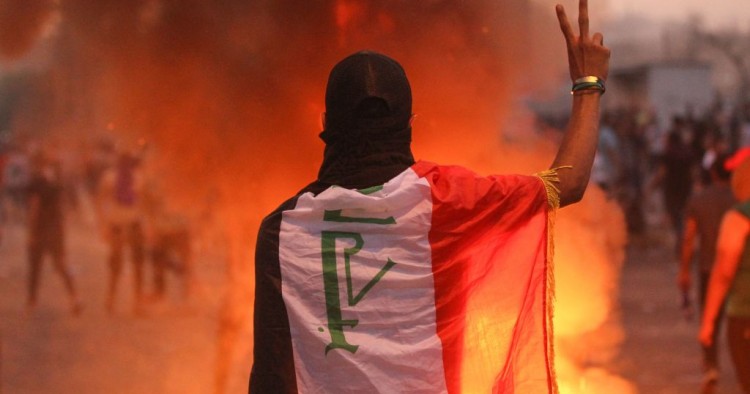This year in the Middle East and North Africa was a year of five uprisings, four ongoing civil wars, and three key elections. It was also a year of key regional and international developments.
Of the five uprisings — in Algeria, Sudan, Lebanon, Iraq, and Iran — one has transitioned positively (Sudan), one has been temporarily crushed (Iran), two are in play (Lebanon and Iraq), and one is witnessing an attempted counterrevolution through a presidential election (Algeria). These five uprisings indicate the deep and persistent generational unrest that the region has seen since 2011; each of the five will have its own complex trajectory.
Of the ongoing civil wars, only Yemen has witnessed a marked de-escalation this year with an agreement between the Hadi government and the Southern Transitional Council, and promising talks between the Saudi government and the Houthis. In Libya, the war is escalating as Gen. Khalifa Hifter is moving against Tripoli and the internationally recognized government, with Russian and regional support. In Syria, parts of the civil war continue with no political resolution on offer: The regime has been able to move into northeastern Syria after the U.S.’s abandonment of the Kurds and after the Turkish incursion; the regime and its allies stepped up their attacks in southern Idlib but without launching an all-out attack. In Afghanistan, the U.S. has been in talks with the Taliban for most of the year, but without final agreement, as the war there ground on in its 18th year.
The local elections in Turkey were a historic blow for President Recep Tayyip Erdogan, and might spell the slow beginning of the end of his long dominance over Turkish politics. In Israel, a long reign also appears to be stuttering to an end, as Prime Minister Benjamin Netanyahu failed to form a government after repeated elections, and faces serious criminal charges. In Tunisia, that country continued to consolidate its political transition — despite economic woes — with the election to the presidency of a respected constitutional law professor.
In terms of U.S. policy, the “maximum pressure” campaign against Iran hit hard, as Tehran and its proxies retaliated against U.S. unmanned assets, Gulf shipping, and Saudi oil installations. Donald Trump held his fire and avoided getting dragged into a shooting war. Gulf allies were taken aback by the brazenness of Iranian attacks and the lack of a significant U.S. response; both the UAE and Saudi Arabia moved quietly to de-conflict themselves with Iran and avoid further attacks. In Syria, Trump betrayed America’s Kurdish allies in the fight against ISIS, gravely hurting U.S. credibility, and aiding not only Turkish, but also Assad regime, Iran, and Russian interests. In Libya, he has openly reached out to General Hifter while the official U.S. position remains one of support for the government in Tripoli. Toward Israel, Trump has continued to buttress Netanyahu’s agenda, recognizing the annexation of the Syrian Golan Heights and declaring that illegal Israeli settlements on the West Bank are not illegal. Meanwhile, Russia has been consolidating its hold in Syria, and has become a major player in Libya. And China is playing the long game, of tying the Middle East into the Eurasian continental web of infrastructure, trade, and technology that it is building.
Indeed, 2019 has been another year of living dangerously.
This is a summary of a longer piece on the year in review across the Middle East.
Paul Salem is the president of MEI.
Photo by AHMAD AL-RUBAYE/AFP via Getty Images
The Middle East Institute (MEI) is an independent, non-partisan, non-for-profit, educational organization. It does not engage in advocacy and its scholars’ opinions are their own. MEI welcomes financial donations, but retains sole editorial control over its work and its publications reflect only the authors’ views. For a listing of MEI donors, please click here.













